Your wish is our command...
We have had plenty requests for the addition of more photos showing Betty at war. The following are what we have to date... If anyone has additional photos showing Betty during wartime that they would like to share, we would appreciate you sending them our way to include here within our pages. We will add your name in the caption, photo donated by...
Thanks and enjoy Betty's War Gallery!
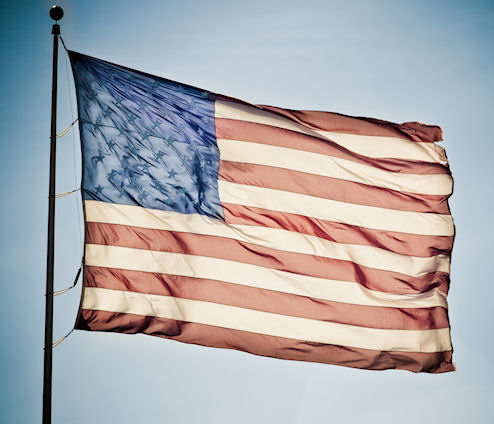
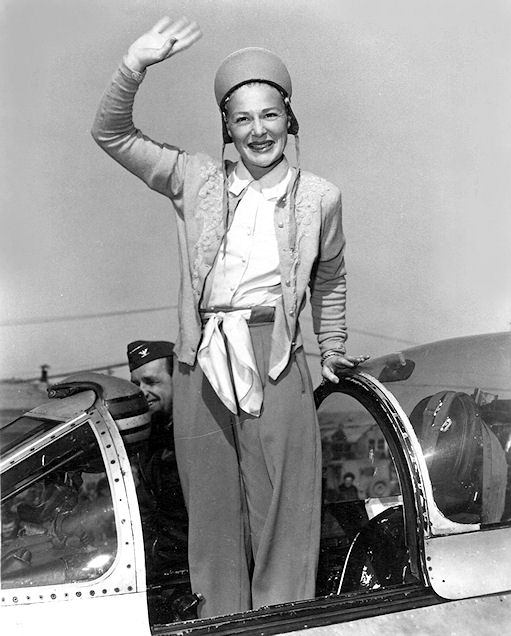
CALIFORNIA HERE WE COME! The Hollywood Bond Cavalcade returns home after a 10,091 mile trip through 16 American cities in 21 days! That's a record to equal their sale of more than one billion dollars in war bonds. Saluted by the entire nation, Hollywood's stars receive a royal welcome from the folks back home when they returned to Hollywood from the nation's third War Bond Tour. Personnel of the trip included Greer Garson, Jimmie Cagney, Lucille Ball, Fred Astaire, Judy Garland, Katheryn Grayson, Paul Henried, Betty Hutton, Jose Iturbi, Harpo Marx, Dick Powell, Mickey Rooney, and others.
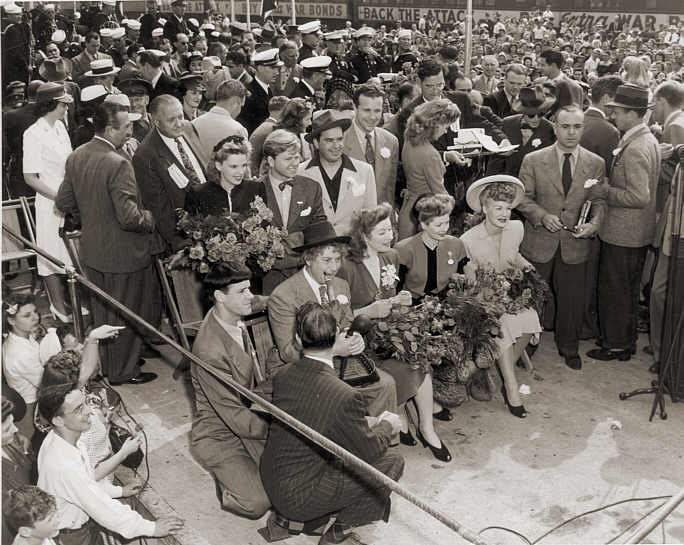
The Hollywood Bond Cavalcade Story
The Hollywood Bond Cavalcade, which toured the country in September 1943, was part of the Third War Loan Drive to raise money for America to fight in the Second World War. It wasn't the first bond tour but it was a fantastically successful fund raising escapade even by today's standards.
A troupe of about 95 left Los Angeles aboard an east bound 11-car special red, white, and blue train. Director Eddie Buzzell continued rehearsals on the train, which was equipped with a portable dance floor and a piano. The tour was managed by Charles K. Feldman and Kenneth Thomson. The troupe included James Cagney, Fred Astaire, Harpo Marx, Olivia de Havilland, Judy Garland, Mickey Rooney, Lucille Ball, Paul Henreid, Dick Powell, Greer Garson, Betty Hutton, Kathryn Grayson, Kay Kyser and his Music Makers, Ish Kabibble, Harry Babbitt, starlets Julie Conway, Diane Pendleton, Muriel Goodspeed, Georgia Carroll, and the Bond Bombadiers: Rosemary LaPlanche, Doris Merrick, Marjorie Stewart, and Dolores Moran.
The Cavalcade arrived in Washington on the morning of September 8 and were paraded to the Washington Monument. That night the tour was kicked off with a radio broadcast carried by the 567 affiliates of the four networks and 324 independent stations. After talks by President Franklin D. Roosevelt and Secretary of the Treasury Henry Morgenthau, the broadcast switched to Hollywood, where Bing Crosby, Humphrey Bogart, Gary Cooper, George Burns & Gracie Allen, Jimmy Durante, Charles Boyer, Dinah Shore, Edgar Bergen, Don Ameche, Robert Young, Ronald Colman, George Murphy, Akim Tamiroff, and Don Wilson performed special material written by Irving Berlin, Arch Oboler, and Private First Class Frank Loesser. The broadcast then switched back to Washington where Cagney placed the services of the Cavalcade and the film industry at the disposal of the U.S. Treasury and the troupe went through their paces for an audience estimated at a record 70,000,000.
On September 9, the Cavalcade played Philadelphia's Convention Hall, and moved to play Boston September 10.
In New York, Betty Hutton announced her engagement. They appeared in Madison Square Garden on September 11 and were joined by pianist José Iturbi and boxer Barney Ross. Iturbi then joined the tour.
The Cavalcade rolled through Pittsburgh's Forbes Field on September 12, Cleveland's Civic Auditorium (where Kyser auctioned off an American flag for $10,000,000 and two pounds of butter and a three pound steak for $100,000 each) on September 13, Detroit on September 14, Cincinnati on September 15, Chicago's Soldier Field on September 16, and Minneapolis on September 17.
The troupe arrived in St. Louis to play the Henry W. Kiel Auditorium on September 18. The company led the ritual parade featuring every branch of the armed forces to the Hotel Jefferson, where police had to chase 300 autograph hounds out of the lobby. They also had to drag a high school girl out from beneath Astaire's bed. In another incident, surging fans shattered a plate glass window, which tore Garland's dress to shreds. Henreid had to leave the tour to report for a film assignment - de Havilland had already left.
The following day was an open date and they planned to spend it in New Orleans. "We selected New Orleans for this day of rest because all of us who have been here previously love it and others wanted to see the city," announced Cagney. "We are ready to sacrifice our rest and we'll gladly play two shows if the weather does not permit the open air show at City Park Stadium." That was deemed a possibility because a hurricane was churning in the Gulf of Mexico and making the forecast a decidedly rainy one.
A large crowd turned up at the Union Station and were held back by the military police and the shore patrol as the Army Transportation Corps Band serenaded the stars, who entered Red Cross Motor Corps vehicles for a procession to the Roosevelt Hotel. An exhausted Kathryn Grayson did not take part and neither did Harpo, who was tending to Buzzell, who had recently directed the Marx Brothers in At The Circus and Go West. The director had torn tendons in his leg when he fell while doing a dance imitation of Astaire in Minneapolis and was now hobbling around on crutches.
The Monday September 20 show began at 8:30 p.m. with a Marine color guard from the recruitment office and a Navy color guard from Algiers on the stage. The huge crowd was policed by city cops, shore patrol, military police, and 1,000 soldiers from Camp Harahan. Unlike some of the other cities, the open air Tad Gormley Stadium allowed for a large attendance. Variety reported the crowd at 50,000, the States stated it was between 65,000 and 75,000, while the Item claimed 100,000 showed up while only 80,000 could squeeze into the 35,000 seat stadium.
Kay Kyser served as master of ceremonies and started the show with his band's theme "Thinking Of You". James Cagney came on to read a poem - "What Do We Do When We Buy A Bond" - and did two numbers and a dance from Yankee Doodle Dandy, for which he had recently won the Academy Award. Dick Powell then crooned some of his hits: "Don't Give Up The Ship," "Let's Get Lost," "In My Arms," and "Happy Go Lucky".
Harpo Marx would intermittently chase a blonde across the stage. He eventually settled down to play two harp solos, bang on the piano, wheeze on the harmonica, do a skit accompanying Muriel Goodspeed, and finally played a pantomime poker game with Lucille Ball, who had appeared with Harpo in Room Service in 1938 and learned physical comedy at his knee. Harpo ended the game by cutting the cards with an ax.
After Fred Astaire danced, Kyser brought down the house with a burlesque imitation of his style. Mickey Rooney did imitations of Franklin Roosevelt, Eleanor Roosevelt, Herbert Hoover, Wendell Willkie, and then played the drums.
Betty Hutton performed some hot boogie-woogie. Iturbi accompanied Kathryn Grayson and Judy Garland. Judy sang "The Man I Love," "Embraceable You," and "Blow, Gabriel, Blow."
Greer Garson appeared and, in a speech somewhat shorter than her recent Oscar acceptance oration for Mrs. Miniver, urged continued bond purchases, saying, "If we relax, if we don't back the attack, the war will go on indefinitely." She announced that New Orleans bond purchases - which would total $40,110,000 - had pushed the Third War Loan's total over the billion dollar mark, more than twice the Cavalcade's original goal.
Fortunately, rain held off until about 10 p.m., just before the extravaganza came to a close. Everyone had a grand time, except, perhaps, for the 40 people who fainted and the one guy that had a heart attack.
The Cavalcade then moved on to play the Cotton Bowl in Dallas the next day and San Antonio on September 22.
They traveled west to San Francisco to perform on September 25 went home to Los Angeles to conclude their 15-city, 10,000 mile, tour the next day. A crowd of 6,000 greeted them at the station in Glendale as the Navy Band played "California, Here I Come."
Hollywood's participation would send the Third War Loan past the $2,000,000,000 mark. The attack having been backed, the war ended less than two years later, just as Miss Garson predicted.
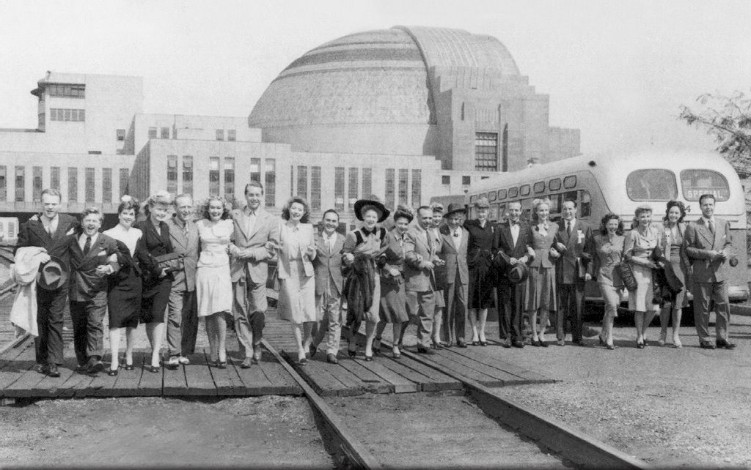
All eyes were on Cincinnati in 1943 when the Hollywood Cavalcade of Stars rode into town on chartered Cincinnati Street Railway buses to promote the
sale of war bonds. Shown outside the Union Terminal, the stars included (left to right) James Cagney, Mickey Rooney, Margie Stewart, Dorothy Merritt, Kay Kyser, Doris Merrick, Paul Henried, Greer Garson, Eddie Buzzell (the show's director), Betty Hutton, Kathryn Grayson, Jose Iturbi, Rosemary LaPlanche, Harpo Marx, Lucille Ball, Fred Astaire, Georgia Carroll, Harry Babbitt, Diane Pendleton, Ruth Bardy, Muriel Goodspeed and Dick Powell.
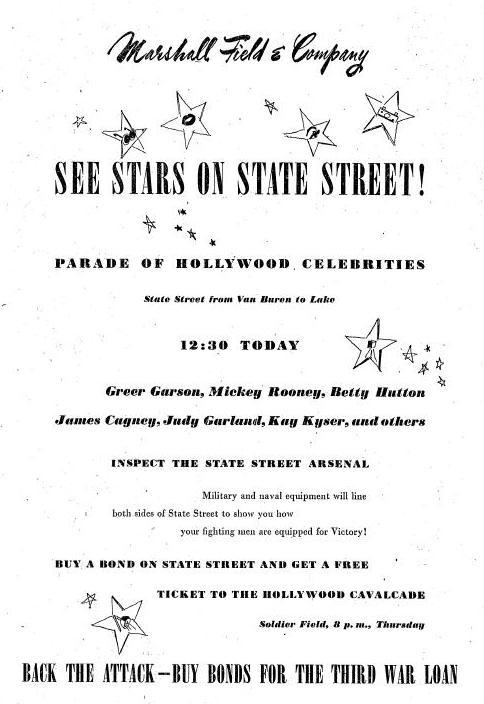
War Bond Tour arrives in Chicago on Sept. 16, 1943
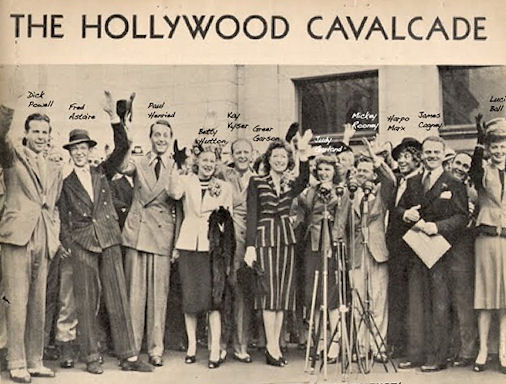
War Bond Tour
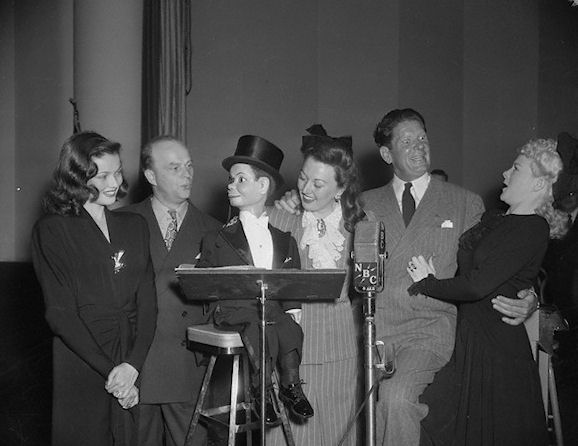
Gene Tierney, Edgar Bergen, Ginny Sims, Bob Burns and Betty Hutton inaugurating a shortwave program for soldiers, August 1942
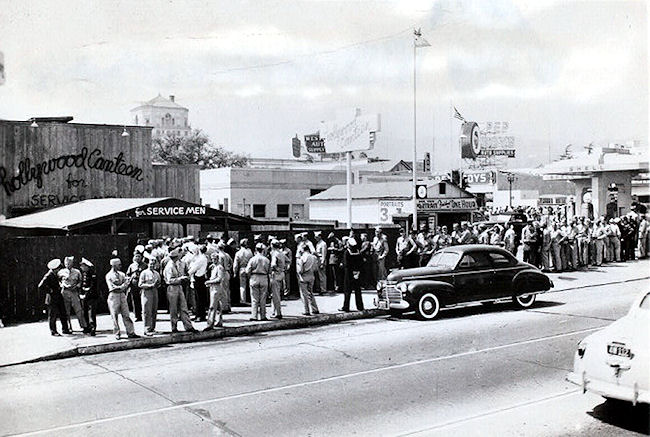
Hollywood Canteen, 1451 Cahuenga Boulevard, Hollywood, California (1942).
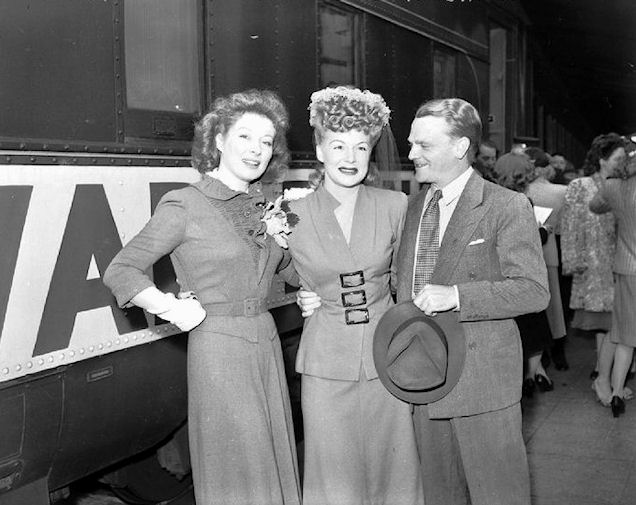
War Bond Tour
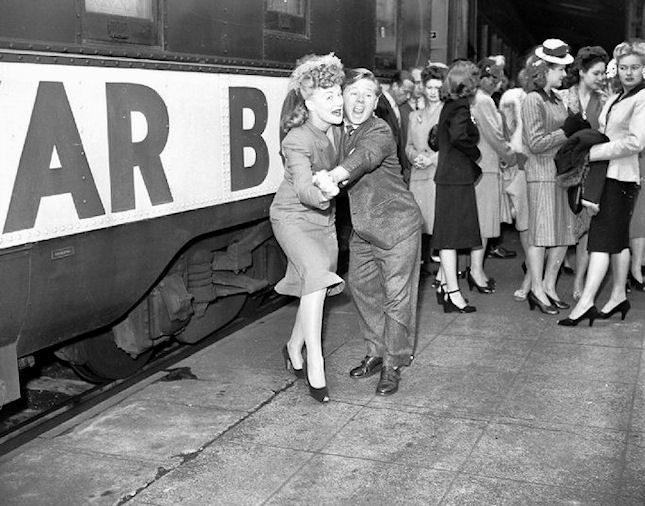
War Bond Tour
From Betty's autobiography, "Backstage You Can Have"
What Betty had to say about visiting our troops in the Pacific...
In early 1945, I was excited to participate in a USO tour of the Western Pacific. I had enjoyed being involved with the War Bond Tour, but now I wanted to step my involvement up a notch and be with the boys who were actually fighting for us. We had not gone into war of our own free will; we were forced into it. There had been no alternative. I wanted to go and entertain the boys who were as bewildered as I about how this all came to be. The tour took us to places I had never even heard of. We ended up doing fifty thousand miles in eight weeks. We made countless stops in our quest to visit as many of our boys as possible, on islands and atolls in the Mariana group such as Guam, Saipan, and Tinian, the Marshall Islands, the Gilbert Islands, and Iwo Jima in the Ogasawara Islands.
It's hard to imagine, but our guys were fighting an enemy in the Pacific who didn't mind dying. Japanese pilots made dive-bomb attacks on our men, a practice which made little sense to any of us. How the hell do you battle an enemy who doesn't give a damn for their own lives? There is never justification for war, but our troops were over there in the middle of it, and I was anxious to be with them.
The real reason I went was to let the boys know America really cared. What better morale booster can you offer our boys but a visit from home? They gave me a General's uniform to wear. In the event I was captured by the Japanese, my rank was supposed to offer me a degree of protection from their persuasive methods of interrogation.
I found the General's helmet useful as a prop to provide me with a degree of disguise so I could surprise our boys when I approached them. Often they really were just boys. Many had peach fuzz faces and appeared barely old enough to be out of high school, much less a world away from their homes and families. I would crawl right down into the foxholes on my hands and knees. When I approached, they would turn and point their guns in my direction. When I got close enough, I would remove the helmet and my golden locks would tumble down around my shoulders. This is when the real fun began. Usually tears of joy flowed unashamedly down their cheeks as they recognized who I was. Someone would cry out, “Betty, you're Betty Hutton. Oh my God, you're here!” This was indeed one of the greatest thrills of not only my career, but of my entire life. Nothing else, no other feeling in the world, could possibly compare with how I felt inside bringing joy to those young men. Everyone would gather close as we exchanged hugs and kisses. Most often, I would sing a few bars from one of my songs, or one they might request. It was difficult for those boys to believe a popular movie entertainer would crawl down into a hole to perform just for them. It wasn't crazy to me at all. I wouldn't have exchanged the precious minutes I had with those guys for anything. I did it as much for me as I did for them, but who actually received the most from the exchange is anyone's guess.
I wasn't expecting anything in return for
visiting our boys, but years later when I opened at the Palace on Broadway in

Paramount publicity photo.
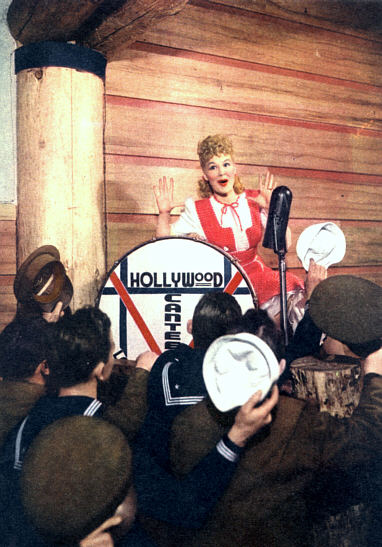
Betty performed often at The Hollywood Canteen. The Hollywood Canteen operated at 1451 Cahuenga Boulevard in Hollywood, California between October 3, 1942 and November 22, 1945 (Thanksgiving Day) as a club offering food, dancing and entertainment for servicemen, usually on their way overseas. Even though the majority of visitors were U.S servicemen, the Canteen was open to servicemen of allied countries as well as women in all branches of service. The serviceman's ticket for admission was his uniform and everything at the Canteen was free of charge.
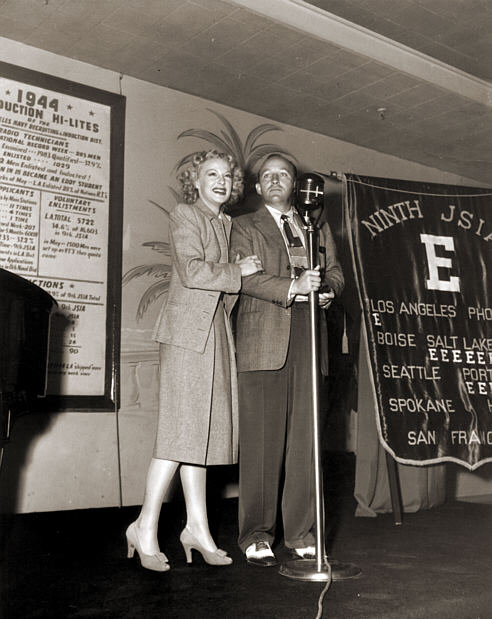
Betty Hutton and Bing Crosby from the new Paramount picture, "Here Come The Waves", at a dinner party given at the studio for personnel of the U.S. Navy Recruiting and Induction Office, Los Angeles area, for the most outstanding recruiting job in the country. Betty plays the part of twin Waves in the Mark Sandrick production.
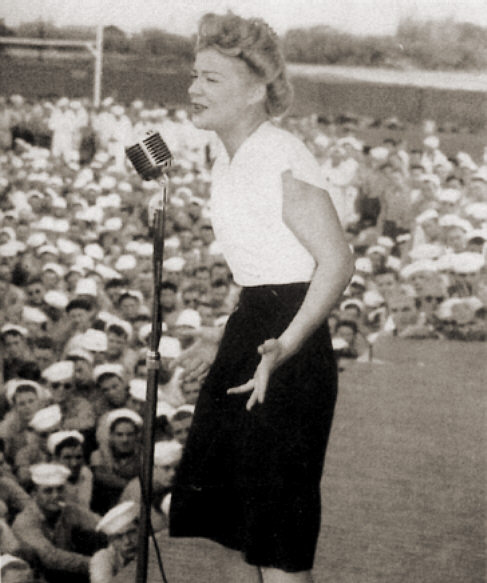
Betty Hutton performing for sailors at Naval Air Station Kaneohe, Oahu.
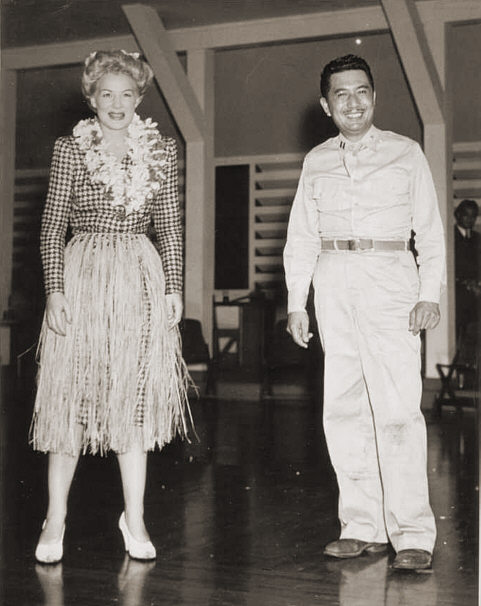
Hawaii?
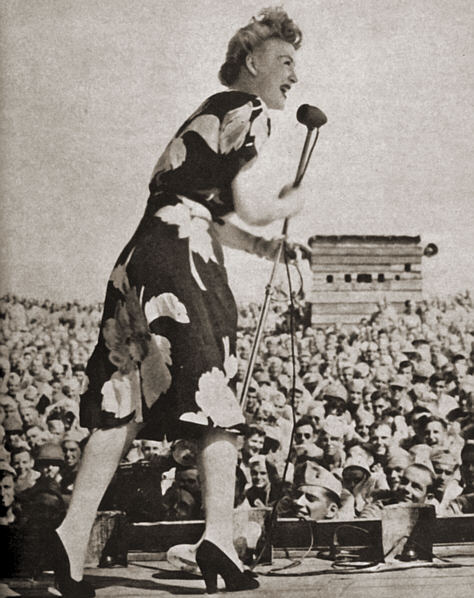
To GIs of World War II, she was as familiar as V-mail. She reached Saipan before the enemy left. She asked her audiece, in the voice from home, "What'll I sing fellas?" And she sang until her voice faded to a whisper. 1944
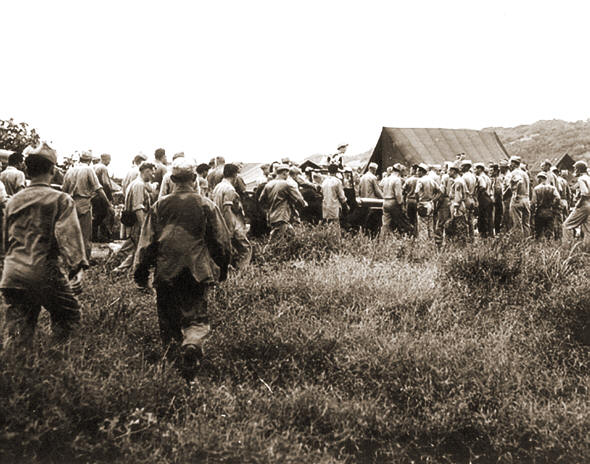
Saipan - Betty is driven into camp by the GIs.
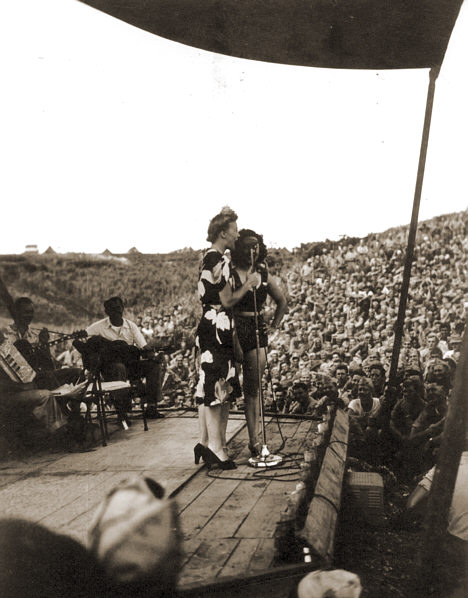
Saipan
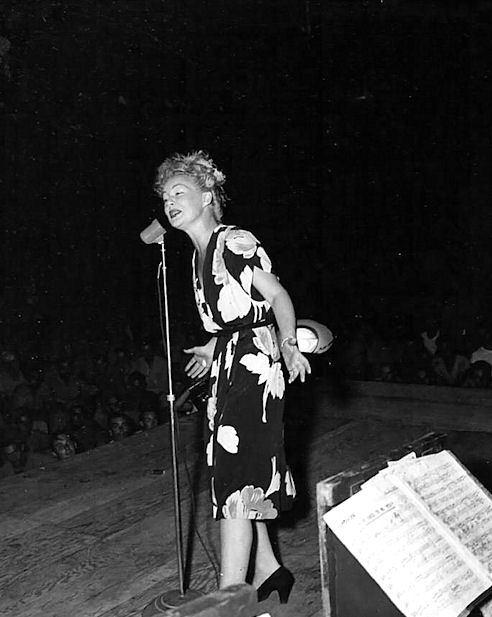
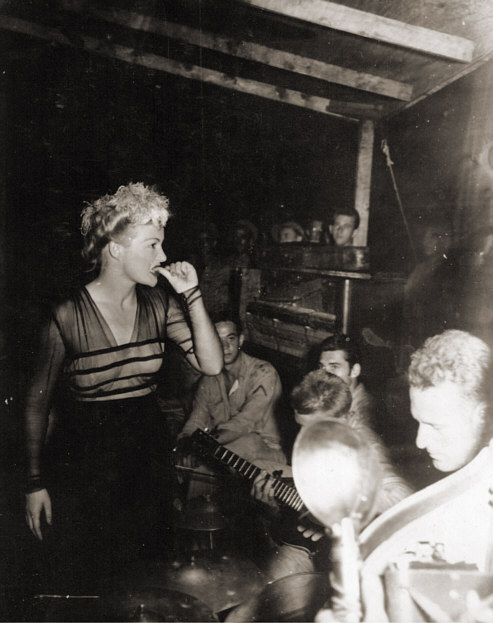
Saipan
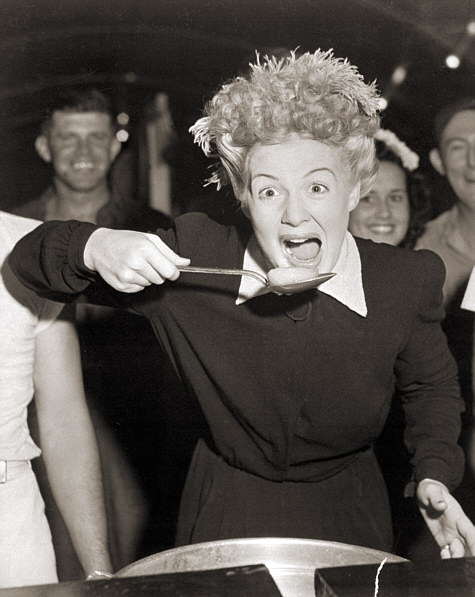
Betty Hutton visits chow halls with sailors and Marines in the Marshall Islands. Peering over the screen star's shoulder is Virginia Carrol, dancer with the Hutton troupe. December 1944
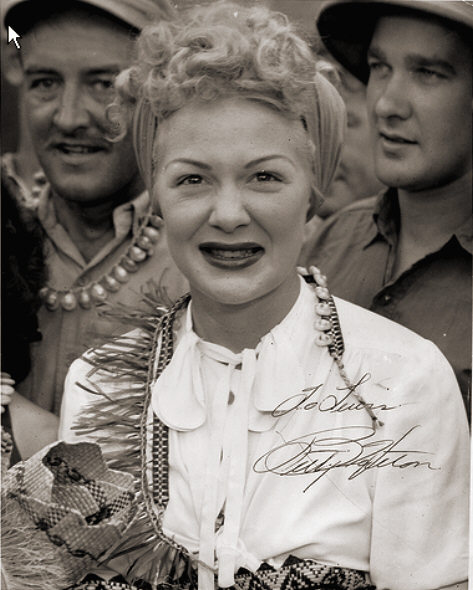
Betty on the island of Tinian
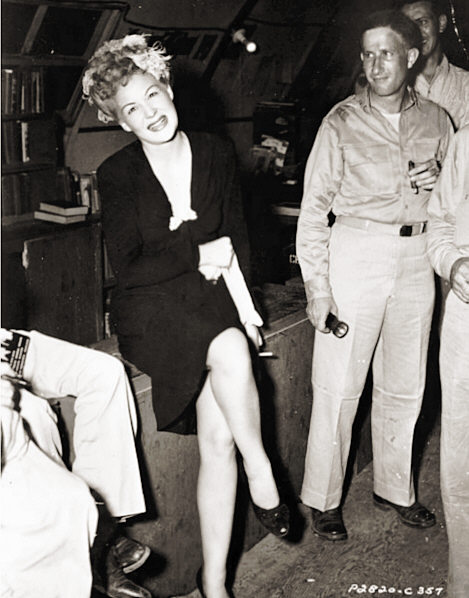
Betty on tour - exact location unknown.
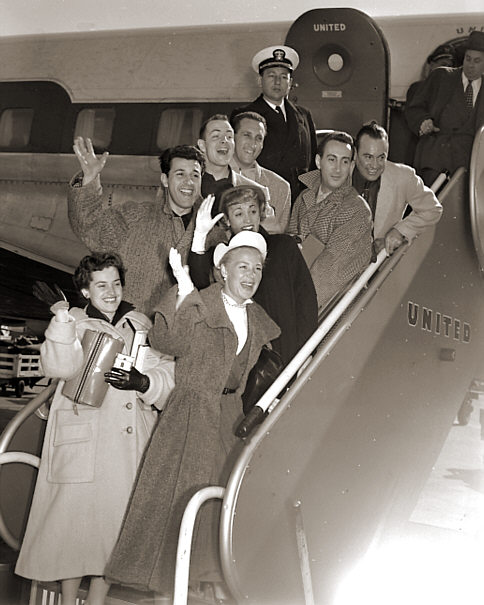
Off to Korea, 1952.
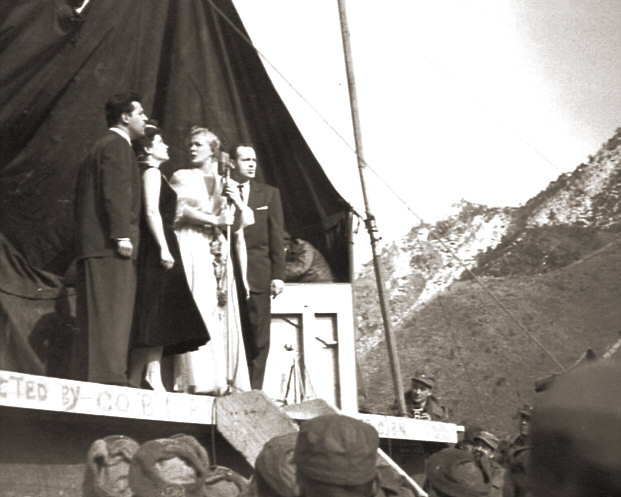
Korea
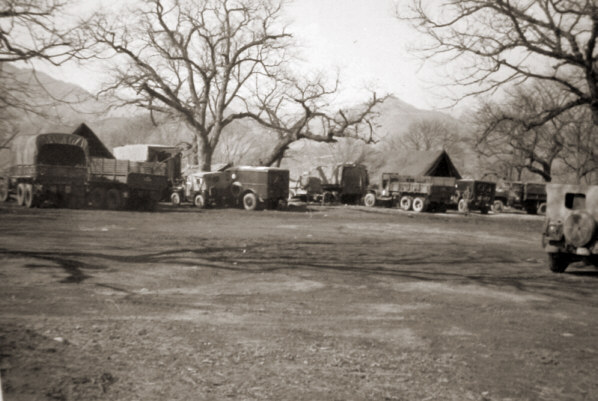
Korea
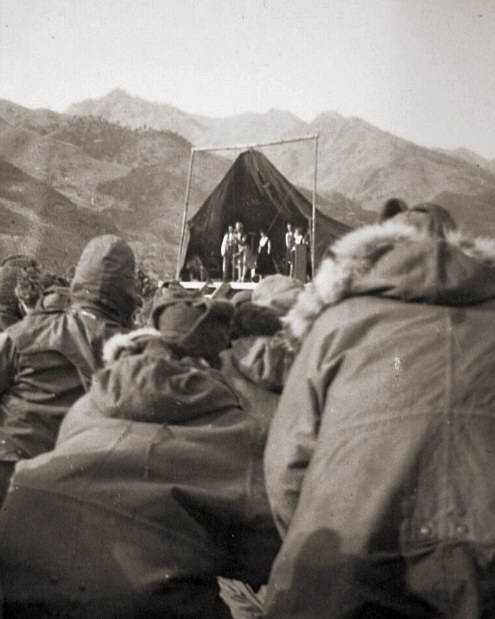
Korea
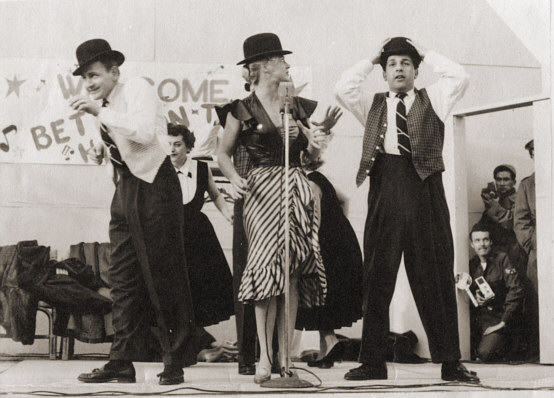
Korea
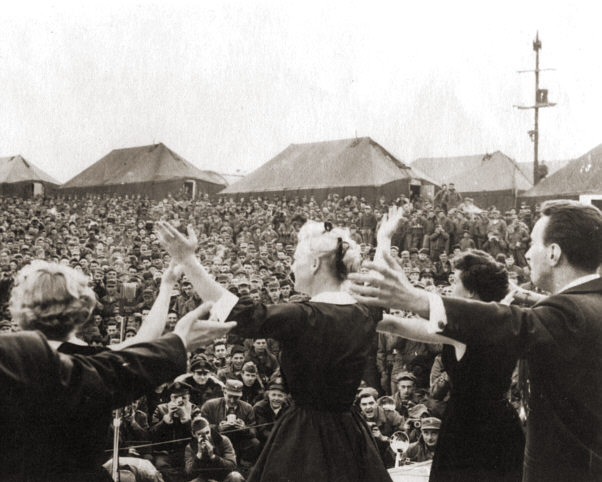
Korea
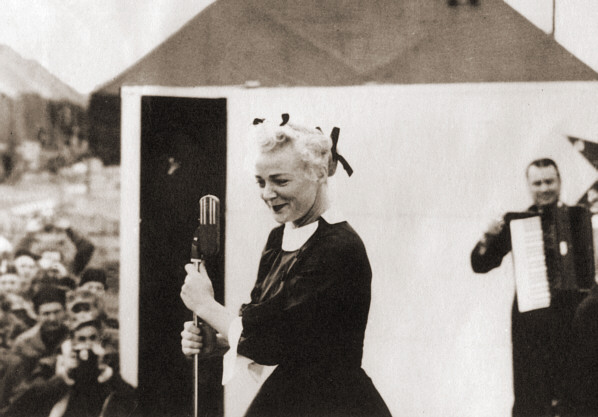
Korea
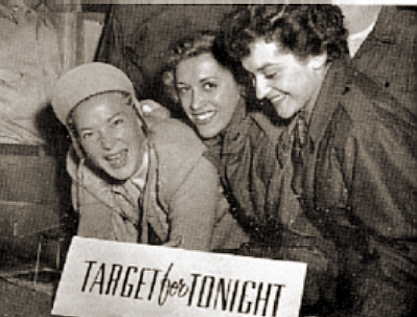
Korea
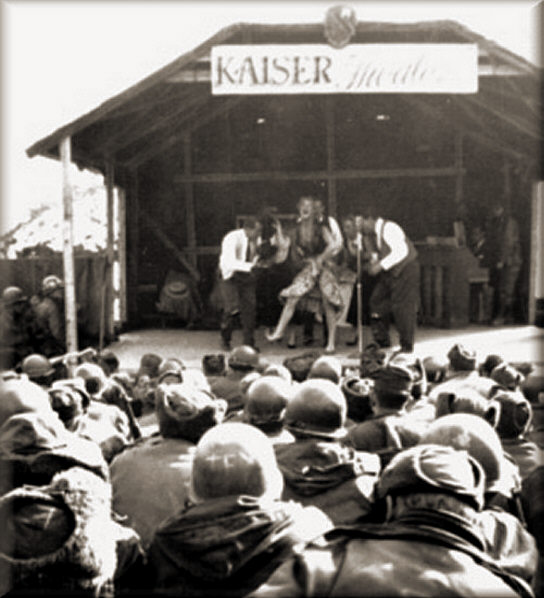
Korea
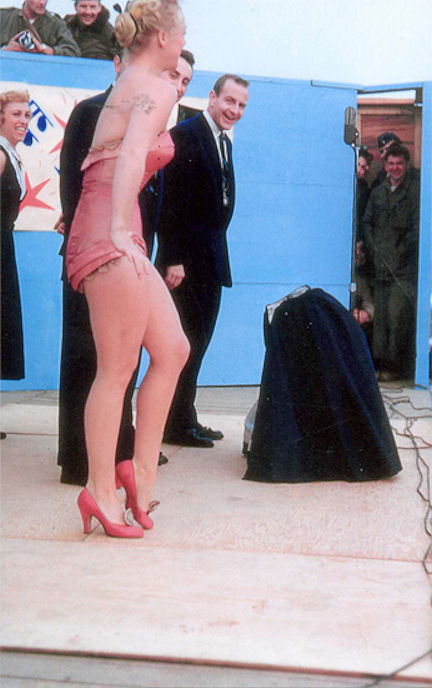
Korea
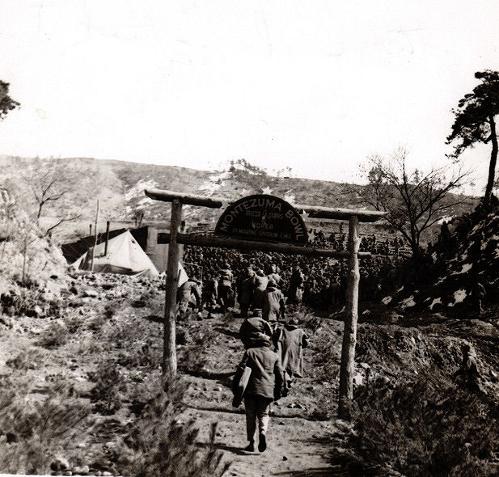
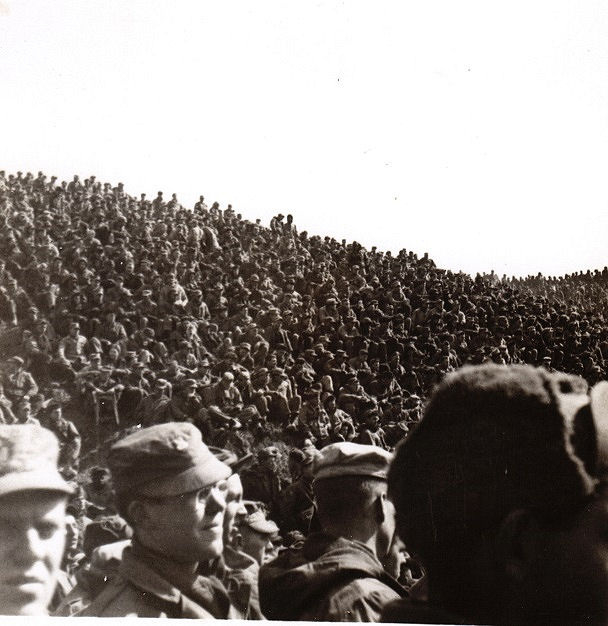
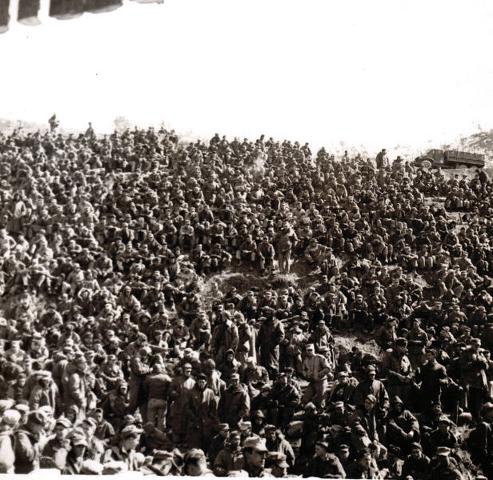
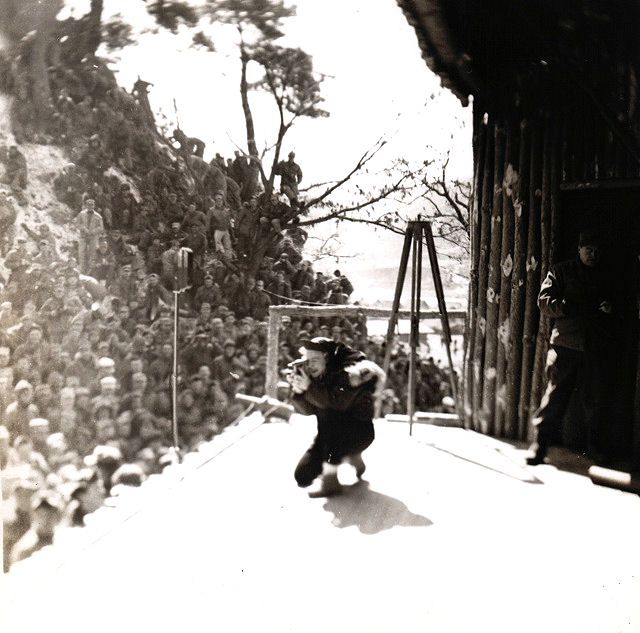
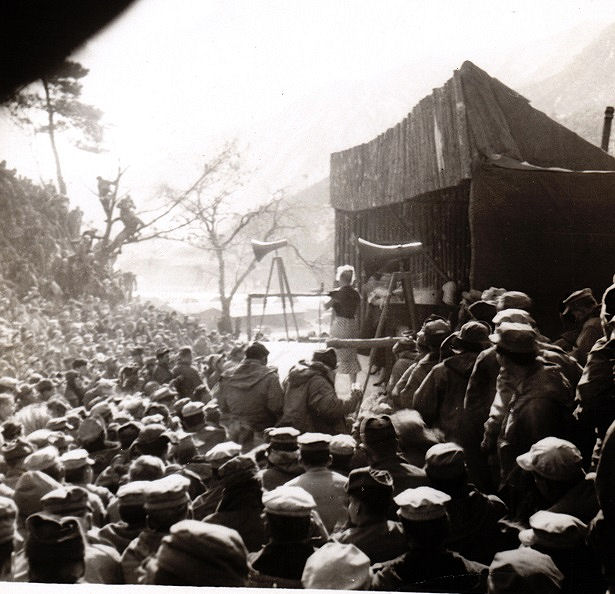

Betty Hutton poses at a switchboard on a visit to Korea with the USO. Photo by and from the collection of serviceman, Mr. William Orcutt.
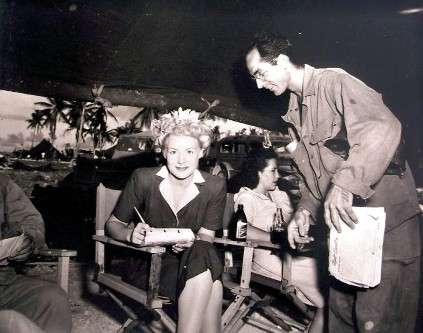
Betty during USO tour in Guam, 1944.
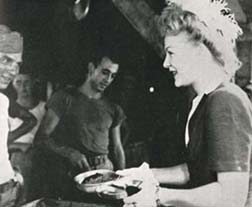
Betty Hutton serves chow to 2nd Division Marines during a USO tour of Saipan October, 1944 USMC Photo
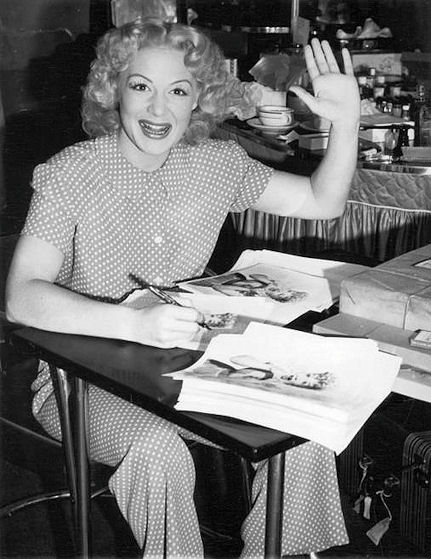
PHOTO CAPTION: Chicago - Betty Hutton, the "can't sit still girl" autographs what remains of 100,000 pictures her fans requested. The peppery actress will soon be en-route overseas to entertain servicemen. September 15, 1944
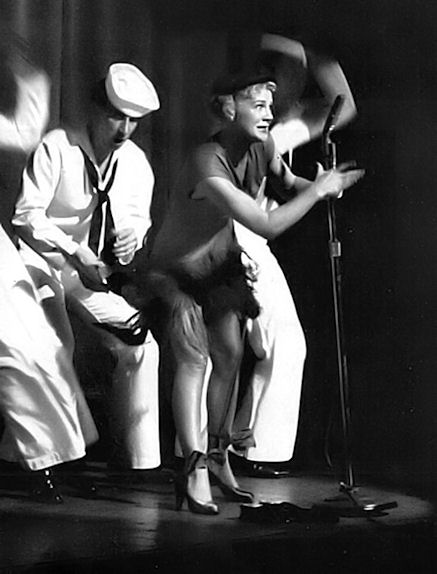
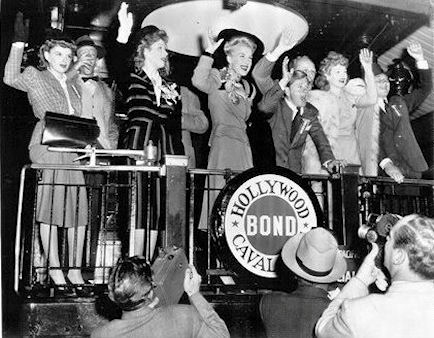
On the War Bond Train
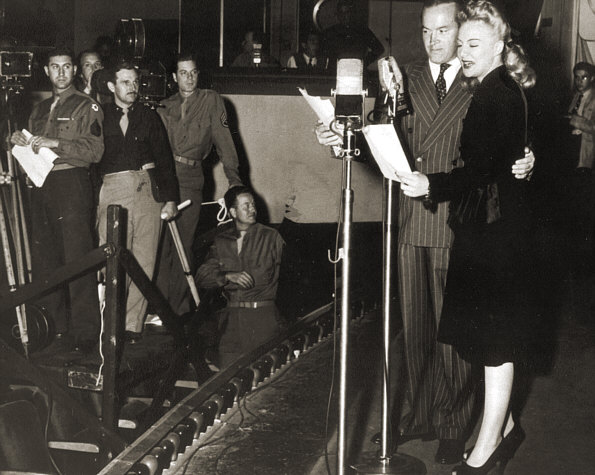
Betty performs with Bob Hope on The Armed Forces Radio's "Command Performance" show.
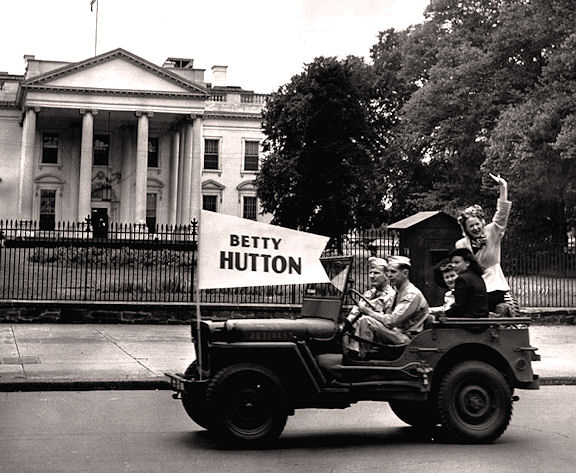
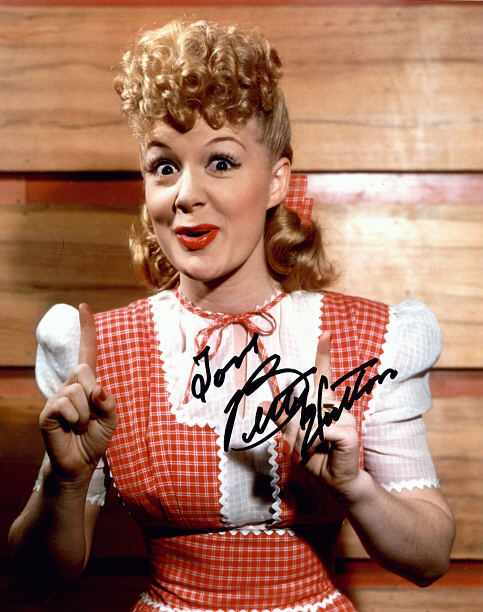
The Hollywood Canteen
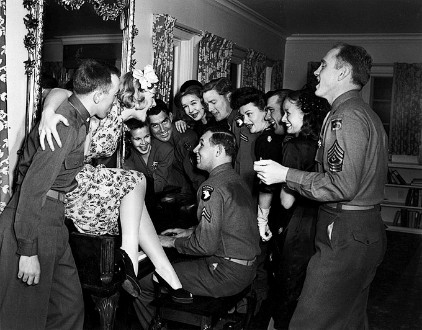
April 9, 1945: Betty Hutton, seated on the piano, and other aspiring starlets sing with troops at the Hollywood Canteen.
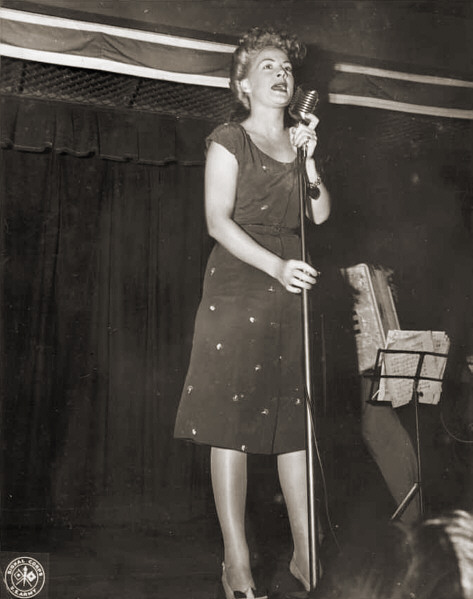
Betty performing at a USO show - believed to be Hawaii.
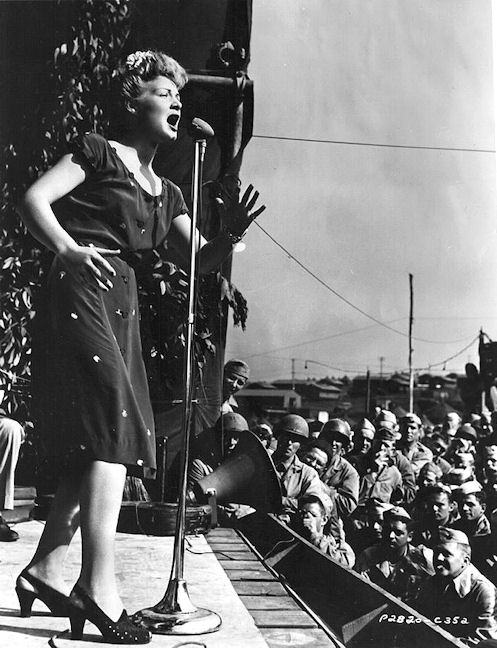
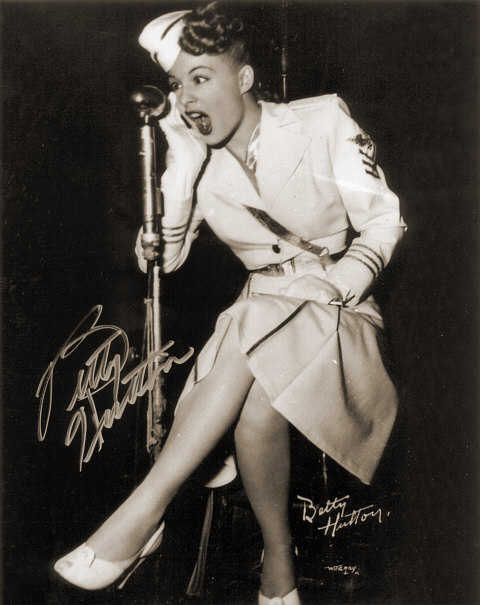
Betty "mugging" for the war effort.
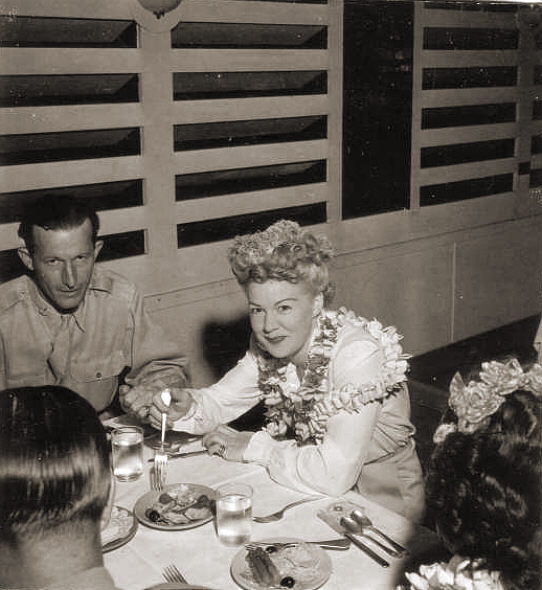
Hawaii?
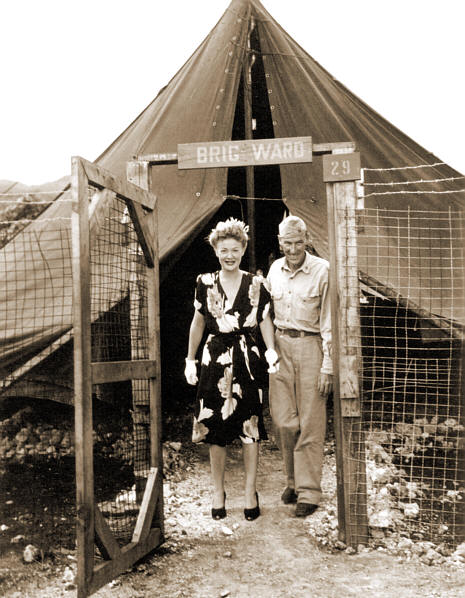
Saipan
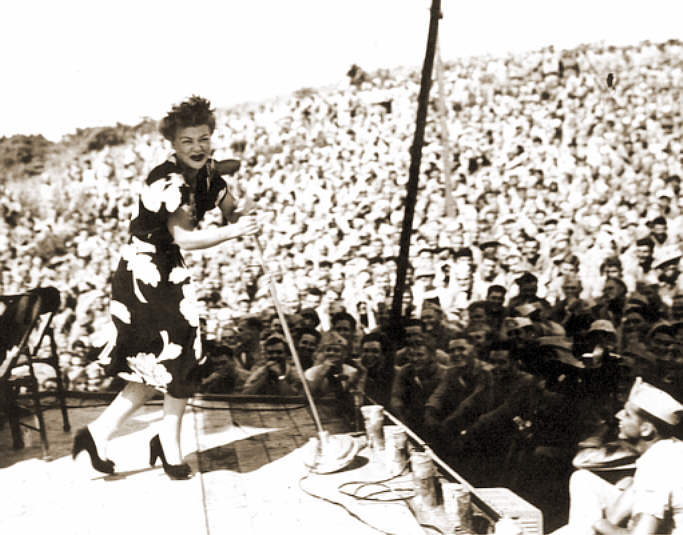
Saipan
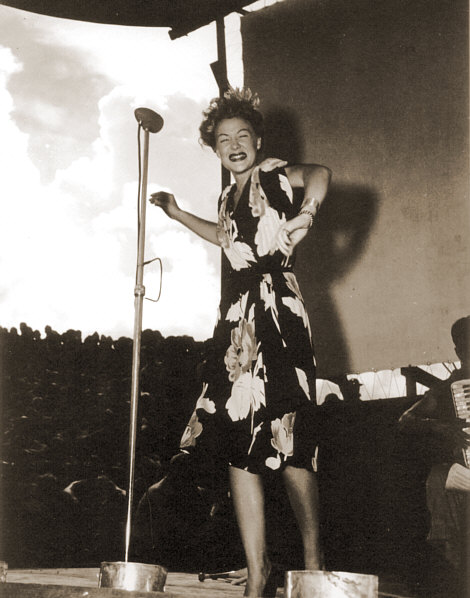
Saipan
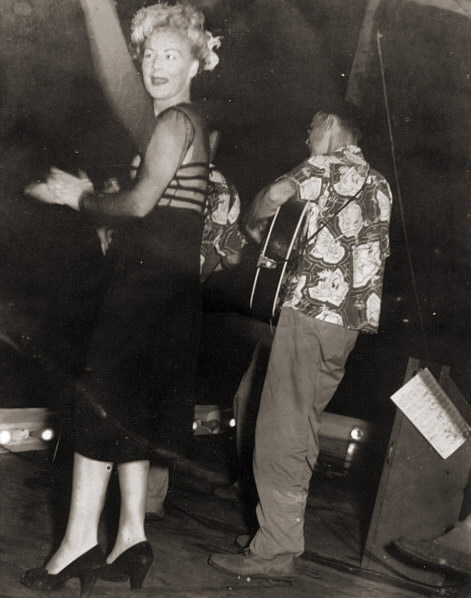
Saipan
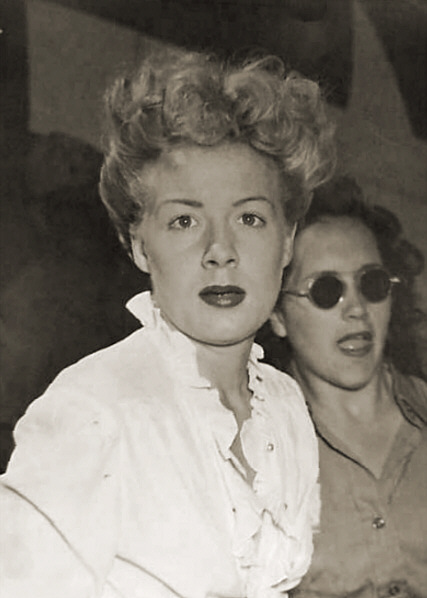
Betty on the island of Tinian
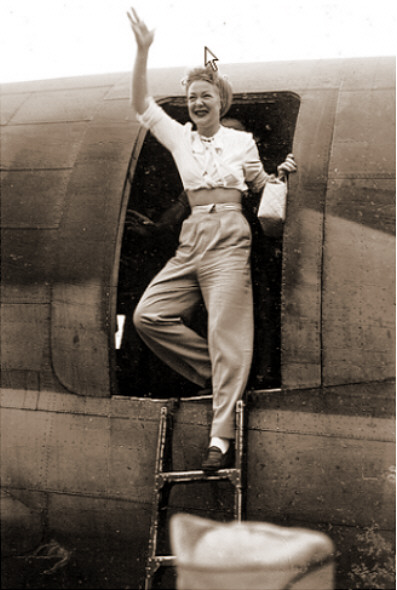
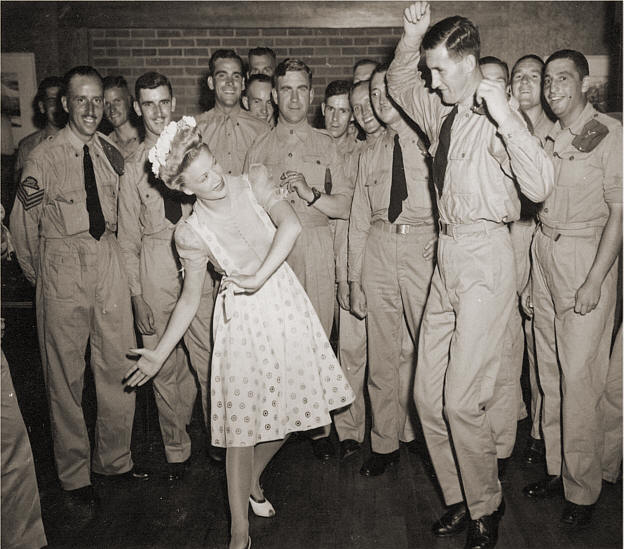
Dancing with troops - exact location unknown.
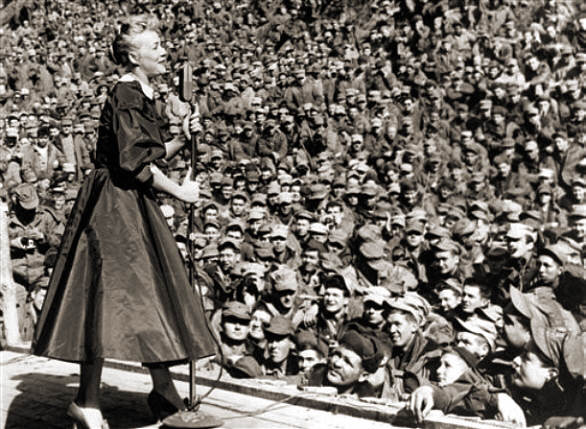
Korea
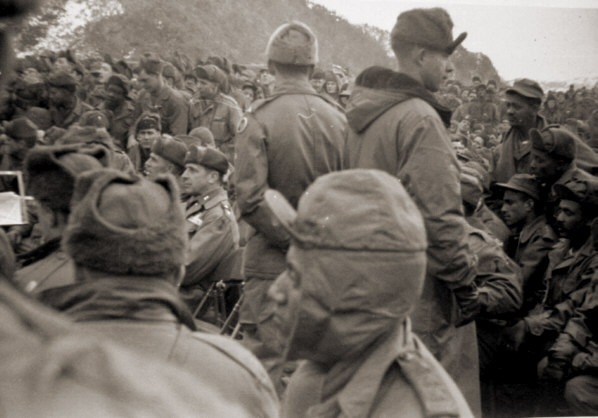
Korea
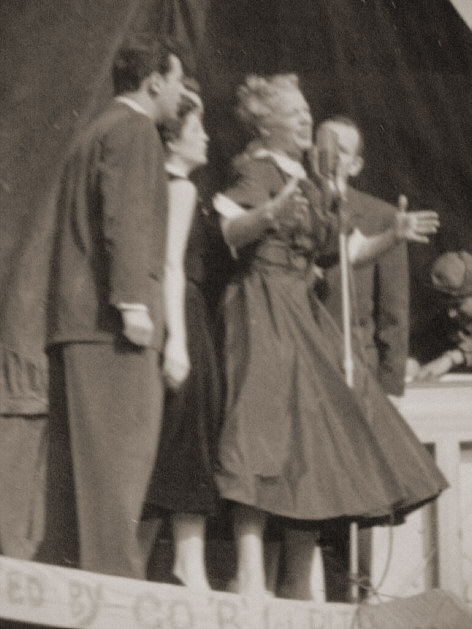
Korea
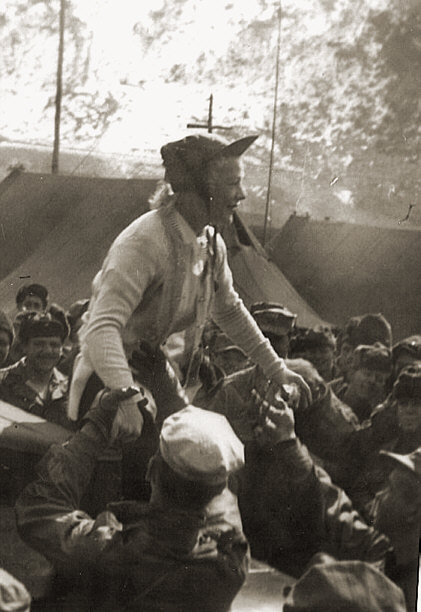
Korea

Korea
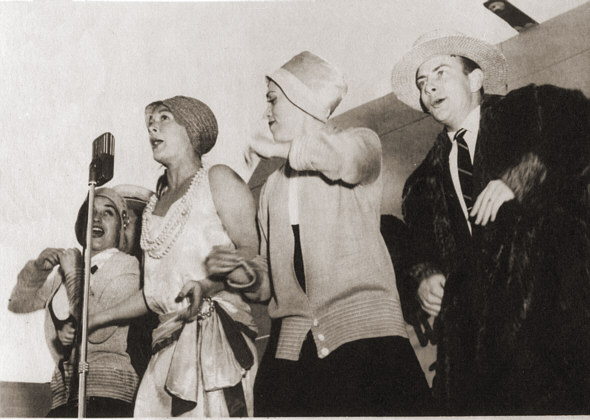
Korea
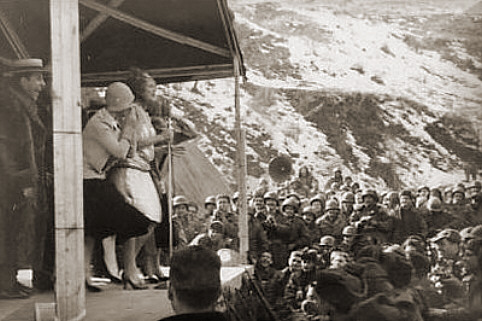
Korea
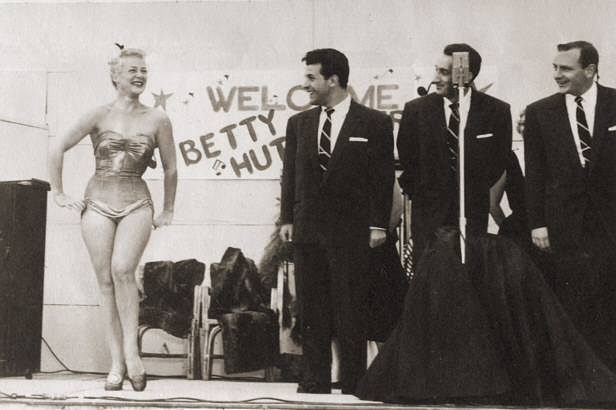
Korea
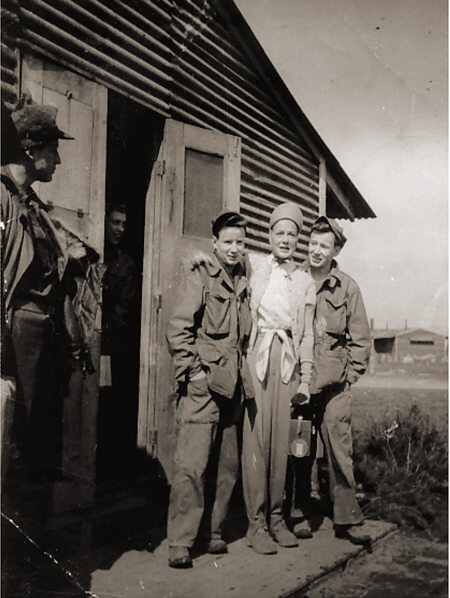
Korea
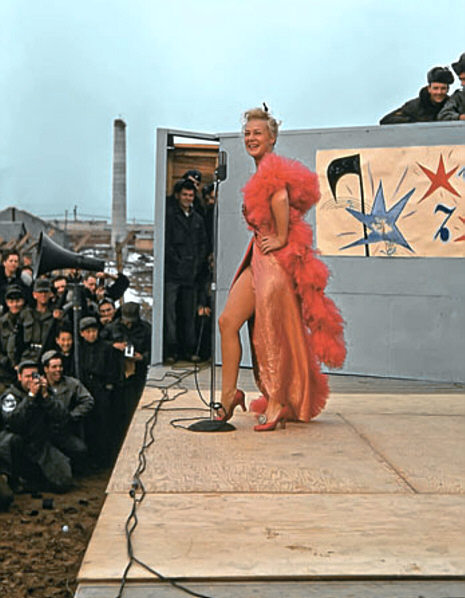
Korea
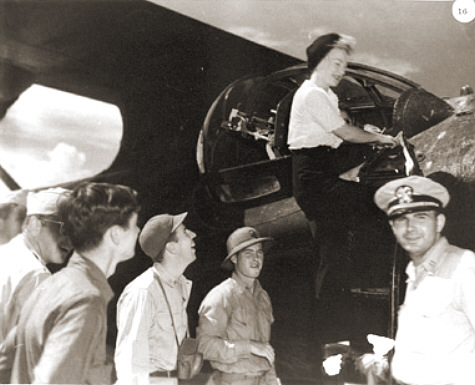
Unknown Location
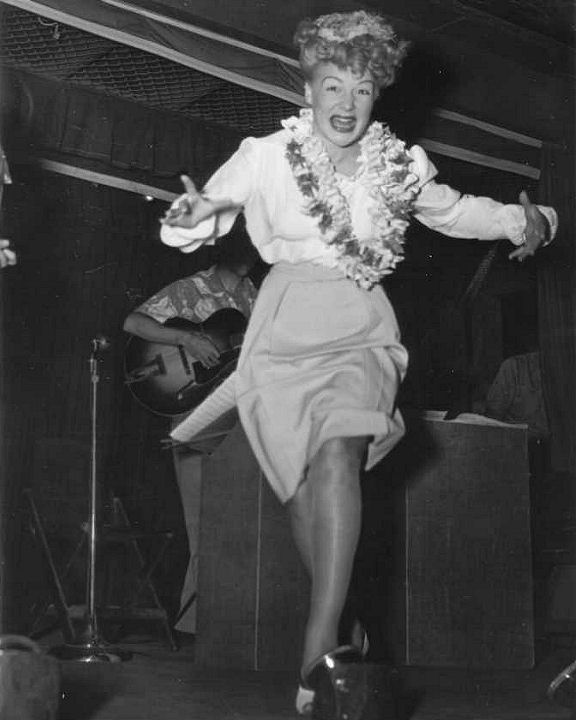
Betty Hutton performes at a USO show. Date and location unknown.
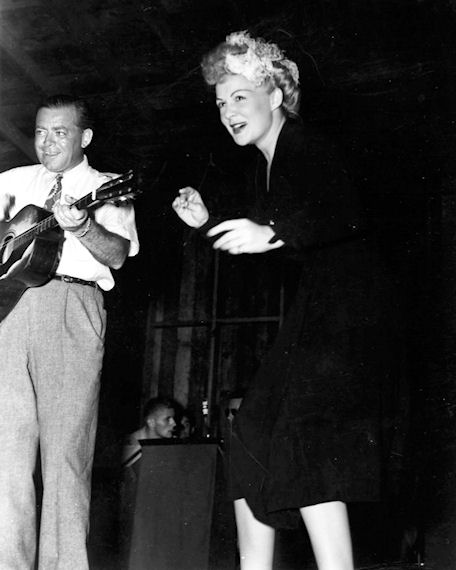
Guam
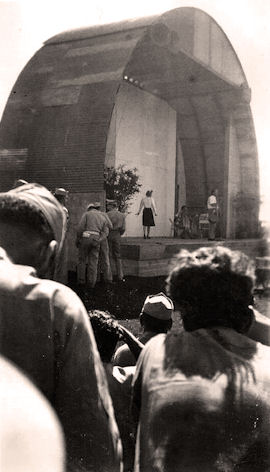
A Photo taken by a Marine showing Betty Hutton on stage introducing another member of the show to the audience. Hawaii - November 1944